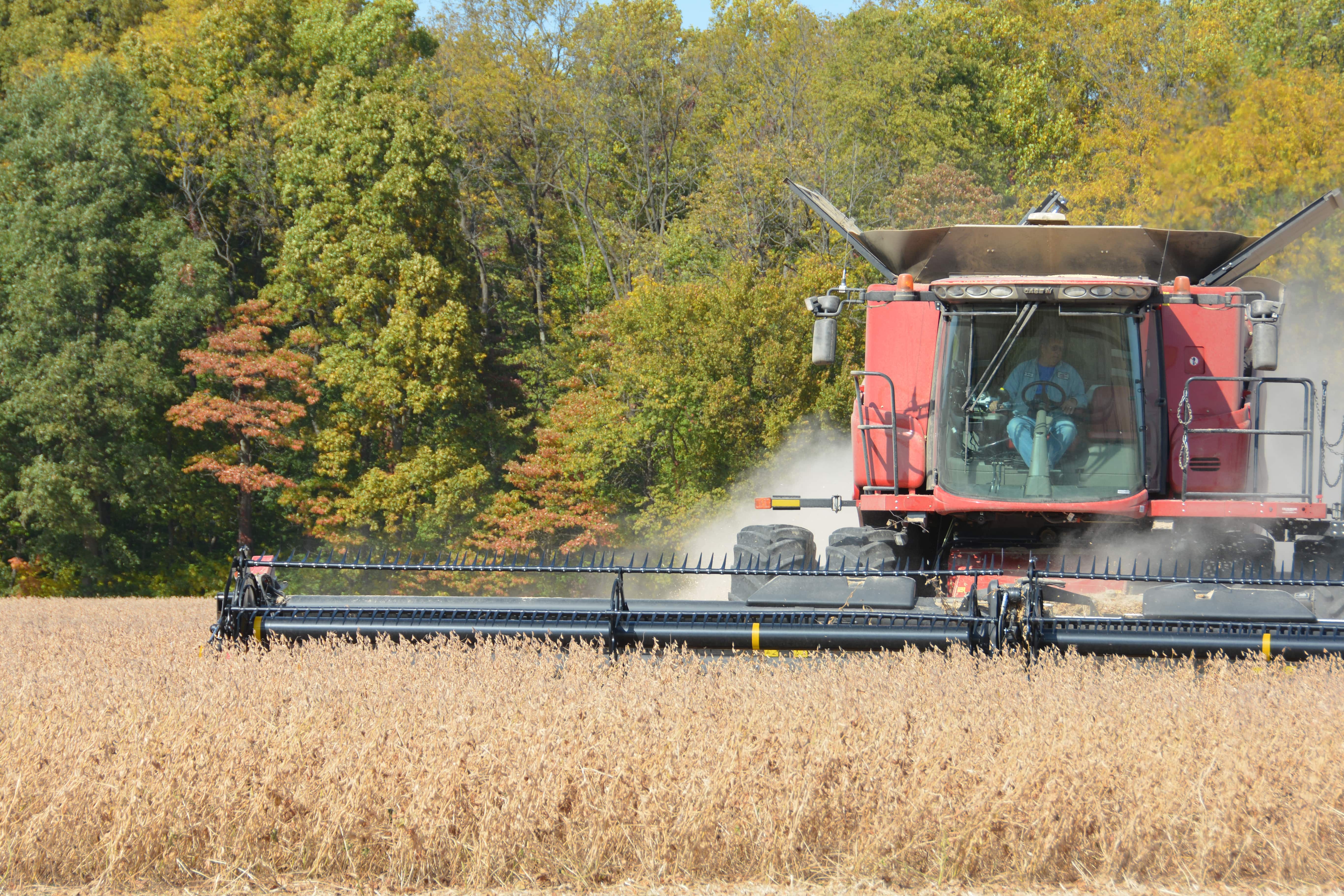Stay Informed
Members around the state report high yields despite abnormally dry conditions
A clear consensus is usually quite difficult to achieve – but that’s not the case with the 2023 crop production year.

Based on interviews with members and Indiana Farm Bureau’s economist, the consensus is that 2023 was a really good year but also a really odd one.
"We dodged a train by having timely rains right before the Fourth of July,” said Dr. Todd Davis, INFB chief economist. “That, combined with moderate temperatures until late in the summer, created an environment that eventually produced the record corn and soybean yields for the state.”
According to the latest crop production report, Indiana corn yield is forecast at 200 bushels per acre (bu/ac), 10 bushels higher than last year’s yield, said Nathanial Warenski, state statistician with the U.S. Department of Agriculture’s National Agricultural Statistics Service. Total production is expected to be 1.08 billion bushels, up 10% from 2022.
Indiana soybean production is expected to total 334 million bushels, down slightly from a year earlier, Warenski said. The yield is forecast at 61 bu/ac, up 3.5 bushels from 2022.
It seems INFB members agree with the experts, according to a series of interviews conducted in mid-December at the INFB State Convention.
Riley Chew, Vermillion County
“We broke some records in corn,” Chew said of his crop, which ranged from 210-250 bu/ac. “That’s very good for our type of soil.”
Chew’s soybeans didn’t break any records, but those yields also were very good, he said, averaging in the upper 60s.
Kent and Isabella Chism, Howard County
For the Chisms, the 2023 season started well, but then along came June, July and August, when rainfall was less than half what it should have been.
“We had no reason to expect a good crop,” Isabella said. But what they got was a near-record yield for soybeans of 10 bu/ac over previous years and corn yields that were at least 20 bu/ac above average.
The downside was that the corn came in fairly wet, and since they ran out of storage on-farm, that meant waiting in long lines at the elevators, Kent added.
Kendell Culp, Jasper County
Culp also battled extremely dry conditions – and was amazed at how well the crops fared in spite of drought.
“It’s one of the best crops we’ve ever had,” he said. “It just shows how far genetics have come.”
Culp said they had corn yields of 250 bu/ac and soybean yields in the 70s – all on non-irrigated ground.
Aaron Fordyce, Washington County
Fordyce, who raises row crops and cattle, said he had a rollercoaster year: a good spring, followed by a dry snap, followed by timely rain, followed by another dry spell, followed by another timely rain…
“It was like the corn jumped 6 inches overnight,” he said. Nonetheless, his expectations were not high as he started harvest. The end rows were not impressive, “But then we started getting into the center of the field and it really changed our minds,” he said. The results were corn in the range of 200 bu/ac and soybeans in the low 60s.
“Everything just fell into place,” he said.
Terry Hayhurst, Vigo County
Like most Hoosier farmers, Hayhurst suffered through a long and mostly dry season, and he also had taken on a new farm that looked very unpromising due to existing weed problems. His expectations were therefore fairly low.
Despite all these challenges, Hayhurst said he had record-breaking soybean yields and a consistently good corn crop. His soybean yields averaged more than 70 bu/ac and his corn 225 bu/ac.
“It’s better to be blessed than good,” Hayhurst said.
Brock Kiesler, Floyd County
Unlike most of the farmers interviewed, Kiesler didn’t have a good harvest because he raises a lot of hay, and 2023 was not a good year for hay in his part of the state. A combination of untimely rains followed by a long dry spell – not to mention equipment breakages – meant that he got only two cuttings of hay when he normally gets three.
The good news is, “We got done,” he said. He added that the demand for the hay he does have is very high.
Collin Pennington, Putnam County
“Our corn crop was exceptionally good,” Pennington said. His yields during a normal good year are usually in the 180 bushel-range for corn, but his corn this year averaged 240 bu/ac. His soybeans averaged 65 bu/ac.
The downside, he added, was that farmers in his area ran out of on-farm storage, which made for a long wait at the elevators.
Troy and Jennifer Thopy, Shelby County
The Thopys had very low expectations when they started harvest.
“It just didn’t look good at all,” Troy said.
But appearances can be deceiving, and that turned out to be the case. Their better acreage averaged over 180 bu/ac.
“Some fields were well over 200 bushels,” Jennifer said.
“I got out there in the field and I didn’t know where it was coming from,” Troy said.
The USDA’s 2023 “Crop Production Annual Summary,” which includes the official crop production data for grains, oilseeds and other crops, will be available after Jan. 12 on www.nass.usda.gov/Publications. An annual weather summary also is included at the end of the report.




